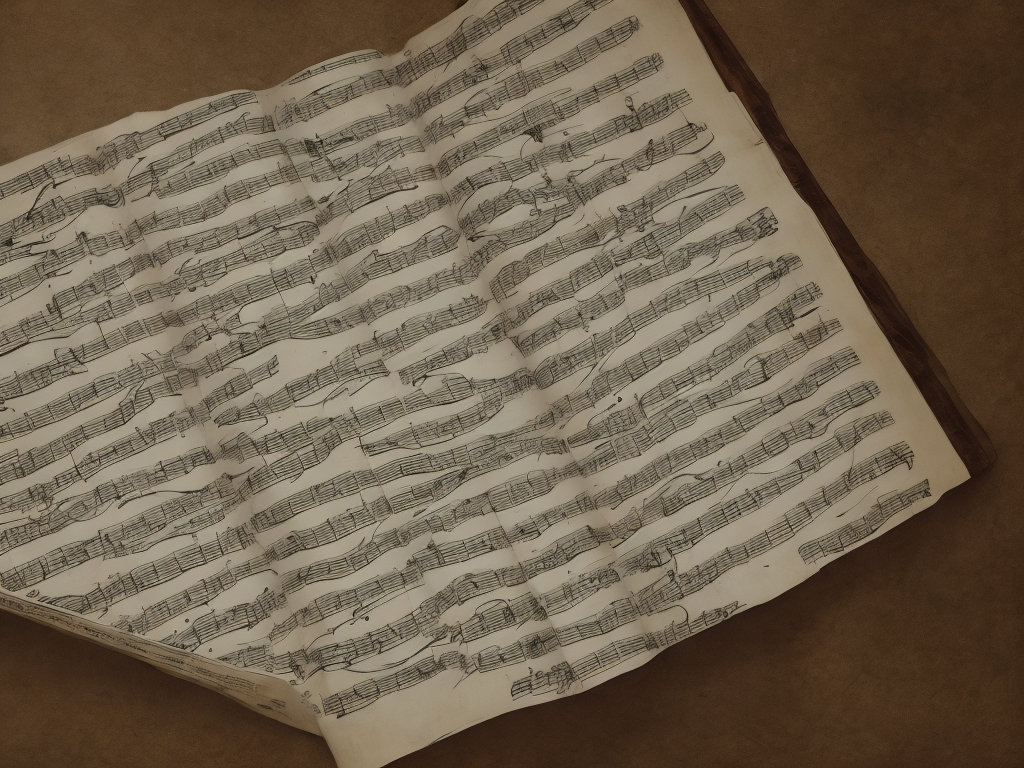
Sheet music is a written representation of sound or music that is usually used by musicians to learn, perform and compose pieces of music. It can be exciting but also intimidating for someone who is new to it. There are several symbols that are used in sheet music to represent rhythm, pitch, dynamics and expression, but with some basic understanding, reading sheet music is not that difficult.
In this article, we will be exploring the various symbols and techniques that are used in sheet music, which will help beginners learn how to read sheet music.
The Staff
The staff is where all the notes are placed. It consists of five lines and four spaces, and notes are placed on or between these lines or spaces. The lines and spaces are numbered from bottom to top, with the first line being the bottom line, and the fifth line being the top line.
The notes
Notes are the symbols on the staff that represent the sound or pitch of a musical sound. The notes can range from lower octaves to higher octaves. Each note has a specific duration and pitch. The different notes are:
-The whole note: A circle that is not filled with color, and it gets four counts. It is the longest note value.
-The half note: A circle that is not filled with color but has a stem. It gets two counts.
-The quarter note: A circle that is filled with color, and it gets one count.
-The eighth note: A note that looks like a quarter note, but with a flag attached to the stem. It gets half a count.
-The sixteenth note: A note that looks like an eighth note, but with two flags attached to the stem. It gets a quarter of a count.
-Bar lines and measures
Sheet music is divided into measures, which are separated by bar lines. Each measure contains a set number of beats and notes that combine to create phrases and musical ideas. The bar lines separate the measures and indicate where each measure ends and another begins.
The time signature
The time signature at the beginning of the staff determines how many beats are in each measure and which note value represents one beat. The top number of the time signature tells you how many beats are in each measure, while the bottom number tells you which type of note represents one beat. For example, in 4/4 time, there are four beats in each measure, and the quarter note receives one beat.
Key signatures
The key signature is a symbol that shows the notes that are sharp or flat throughout a piece of music. It is placed at the beginning of the music after the clef symbol. The key signature helps provide the musical context for the piece by defining the tonality or the key around which the piece is written.
The clef
There are two types of clefs: the treble clef and the bass clef. The clef symbol goes at the beginning of the staff, and it indicates which notes correspond to which lines and spaces on the staff. The treble clef is usually used for higher-pitched instruments like the violin, while the bass clef is used for lower-pitched instruments like the bass guitar.
Dynamics, tempos, and expressions
Dynamics, tempos, and expressions are the symbols in the sheet music that tell you how to play a piece of music. They describe how loud or soft the music should be played, the speed at which it should be played, and what feeling or mood the music should convey.
Dynamics symbols include pianissimo (pp), piano (p), mezzo-piano (mp), mezzo-forte (mf), forte (f) and fortissimo (ff), among others.
Tempo symbols include adagio (slow), andante (moderate), allegro (fast), presto (very fast), among others.
Expression symbols include legato (smoothly), staccato (short and articulated), crescendo (gradually getting louder), decrescendo (gradually getting softer), among others.
Practice Strategies
Now that we have discussed the key symbols in sheet music, it's time to put them into practice. Finding sheet music for your instrument of choice can be an incredibly helpful tool in learning how to read sheet music. Whether you're playing piano, guitar or flute, there are resources available online or at local music stores where you can find sheet music.
Slowly begin by looking at the music and studying the symbols. Make sure you know what each symbol on the paper means before attempting to play the piece. After that, start to tap out the rhythm of the piece while reading the sheet music. This helps you to see the patterns of the phrases and how they fit together.
Start playing slowly and carefully, paying attention to each symbol as you play. Make sure to count out the beats so that you stay in time with the music. Additionally, practicing with a metronome or drum machine can help you develop better rhythm and timing.
As you get more comfortable with the piece, start to play it at a faster pace. Focus on staying accurate with the symbols and keeping everything in time. Memorizing the piece can help you to read sheet music even more fluently, as it allows you to focus entirely on reading the music without having to look away.
In summary, reading sheet music is an incredibly valuable skill for any musician to have. It provides a way to learn new songs and explore different musical styles. By knowing the symbols and what they represent, you can read sheet music with confidence and fluency. The key to mastering reading sheet music is consistent and focused practice. With patience, dedication, and the proper techniques, anyone can learn how to read sheet music.
 Self-Instruct
Self-Instruct